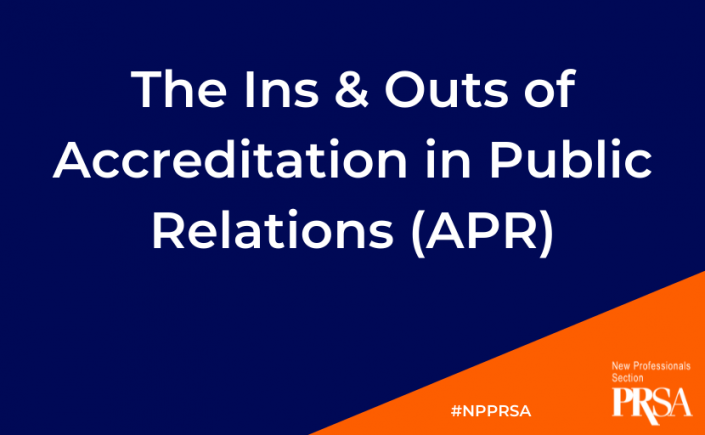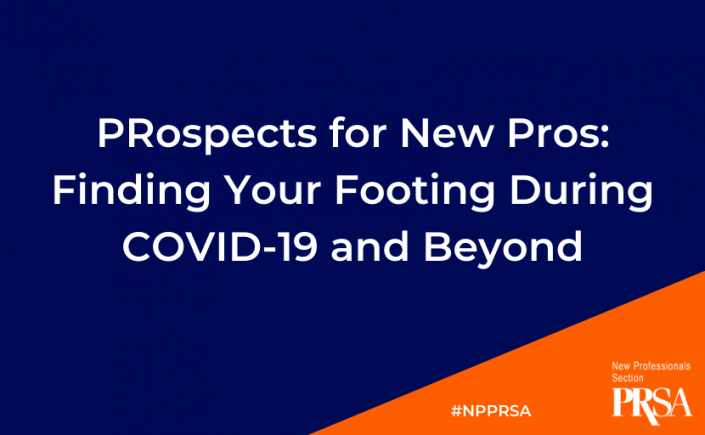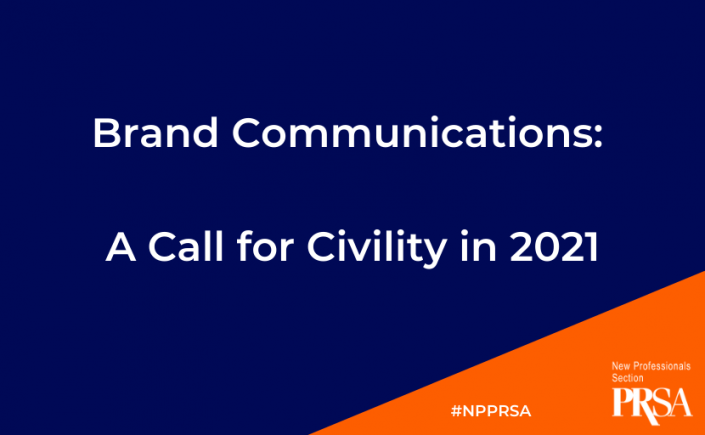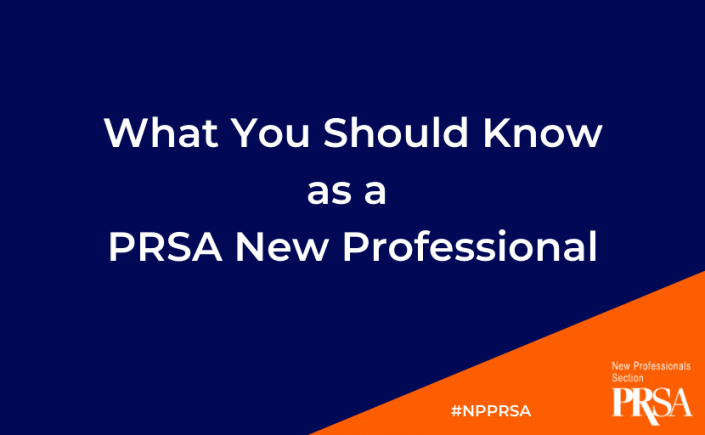On Thursday, September 16, the New Professionals Section of the Public Relations Society of America (PRSA) hosted A Conversation on the Ins & Outs of the Accreditation in Public Relations (APR). Dedicated to helping new professionals understand the value that APR can add to their career, PRSA Fellows Kathryn D. Hubbell, APR, M.S., and David Thompson, APR, shared their experiences and insights into accreditation.
For Hubble, owner of AdScripts, LLC, and with 37 years’ experience in public relations, marketing and advertising, the process wasn’t just about adding APR to the end of her name. “APR really changed what I was doing,” said Hubble. Being self-employed, the APR process for her meant that “I finally understood what it took to line up a PR program using research and strategy. After I got my APR I raised my prices, and no one said a word.”
Despite having a degree in journalism with a minor in Public Relations, Hubble explained that the APR process and what she learned elevated her professional career. “The study process alone is worth it,” said Hubble. While studying for her APR, she was working with a client and decided to plan out her work for the client according to the book. “I took a real-world situation that I was already involved in and brought it down to earth,” said Hubble.
Not only did it make a big difference on the quality of work, but it was, in her opinion, the best way to really learn the materials she was studying.
“It changed everything I was doing in PR. I wasn’t just giving my opinion to my clients anymore; it’s about using research to back up everything you’re saying and doing,” said Hubble.
Thompson added that his pathway into public relations wasn’t as direct, so the APR really helped develop him into a PR professional.
After earning a degree in mathematics and working in computer science, Thompson had a “midlife crisis early,” and decided to change directions. He worked in radio and ended up as a television reporter for 20 years, working news throughout the country, learning as he went. With success in television news, Thompson decided to move into public relations.
“For me it was all on-the-job training. I didn’t know what I didn’t know. I knew how to be a TV reporter, but they don’t do strategy. I thought PR was media relations; I didn’t know better… I worked hard to learn about what public relations is” said Thompson. “When it came time to think about the APR, it filled in gaps I didn’t know I had.”
He added that the APR preparation process helps you learn what strategic communications planning is. Thompson had signed up for weekly APR coaching classes through his local PRSA chapter. “After each class, I would go back to work with new techniques, knowledge, and inspiration. It made such a huge difference in my career.”
Thompson broke down the APR preparation process into three steps:
- Planning for the APR application and time commitment.
- Preparing for the readiness review, which includes a presentation on a PR campaign you’ve worked on.
- Preparing to take the exam, which tests your knowledge of the materials in the textbooks.
Hubble and Thompson both explained that while PRSA recommends five years of experience before applying for the APR, it’s really about people’s individual experiences working in public relations. For those that might not feel ready to start the APR application now, they recommended getting involved in PR campaigns, whether at work or volunteering for local PR professionals.
Hubble added, “APR gave us more confidence” so moving forward with strategic communications, “we were following science rather than gut instincts. It was a wonderful process.”
For more information on pursuing your own APR, check out the resources below:




